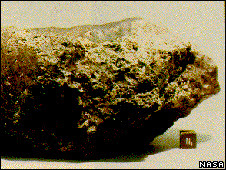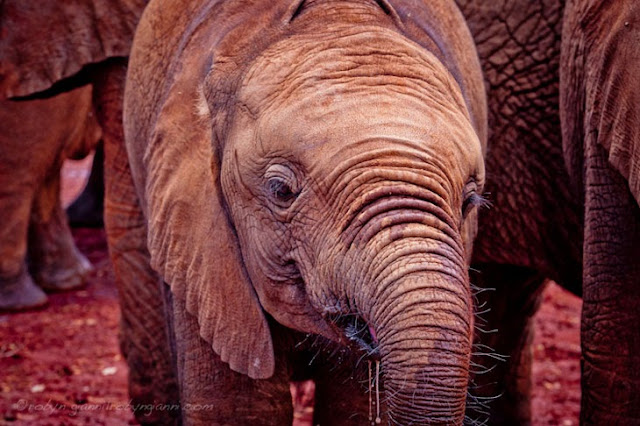5 Broken Cameras really is about those cameras. The lifespan of each camera frames a chapter in the struggle of the Palestinian village of Bil’in—joined by activists from Israel and elsewhere—against expanding Israeli settlements and the path of the country’s approaching security fence, which together would consume much of the village’s cultivated land. The cameras also capture the growing awareness and puzzlement of a little boy born into a world torn by a conflict that adults can barely comprehend. When Palestinian farmer Emad Burnat bought his first camera in 2005, his intention was to film his newborn baby boy, Gibreel. Little did he anticipate that, as a self-taught cameraman, he would become a source of footage for court evidence, news agencies, Internet video, other documentaries—and then his own Oscar®-nominated feature film (made with Israeli filmmaker Guy Davidi).
5 Broken Cameras is a powerful work of front-line filmmaking. Just when Emad gets his first camera, the people of Bil’in (west of Ramallah) discover that the security barrier route will cut through their farmlands and that the neighboring Israeli settlement of Modi’in-Ilit plans to expand onto disputed land.
The Bil’in villagers begin marching every Friday in peaceful protest, and Emad begins filming the demonstrations. We meet two of his friends in the forefront of the protests: tough and angry Adeeb and charismatic Phil, who is remarkably optimistic when the others feel hopeless. Israeli soldiers respond to the protests with tear gas and rubber bullets. But word of Bil’in’s resistance spreads, inspiring the residents of other villages and drawing international attention. The soldiers shoot up Emad’s first camera.
Emad receives a second camera from his friend Yisrael, an Israeli activist. He continues filming his family and the weekly demonstrations. The villagers don’t give up, even after the wall is completed. Young Gibreel and other children gravitate to Phil because of the hopefulness he exudes. When Adeeb is shot in the leg, Phil shouts in outrage and pleads with the soldiers. When the villagers build a concrete structure to protect village land, their olive groves are burned. A settler breaks Emad’s second camera.
With another donated camera, Emad takes Gibreel, now three, to see the demonstrations. Soldiers begin entering the village more often, during the day and at night, arresting people, including children, in their homes. The kids hold their own march, shouting, “We want to sleep!” Gibreel sees his uncle arrested and his grandparents trying to block the Israeli jeep taking him away. One night the soldiers take his father. Emad is imprisoned for a few weeks for throwing rocks. When he is released due to lack of evidence, he quickly returns to filming the action. His third camera is shot up.
Other villages follow Bil’in’s lead, staging demonstrations as the barrier approaches their lands. In a neighboring town, the violence intensifies. Fearing a third Intifada , the Israeli army steps up its defense. Villagers begin to question the ideal of non-violence. Then, to their surprise, the Bil’in villagers win a legal victory—an Israeli court rules that the existing fence should be dismantled and erected farther from the village. Only some land will be regained, but the villagers celebrate this small victory. As time passes, however, the ruling is not implemented. One day, returning home after having crossed the barrier to work the land, Emad crashes his truck. Images of this accident are the last to be filmed by his fourth camera.
After 20 days in an Israeli hospital, Emad awakens with serious injuries and realizes that he is unable to continue the physical labor of farming. Gibreel is now four years old. The violence around the protests escalates. Meanwhile, the wall stands, and settlers begin moving into houses in Bil’in. Phil is the only one who maintains his optimism. Then, during a demonstration, Phil gets hit in the chest by a tear gas canister and dies instantly. The village is in shock. Gibreel and other children kiss the memorial posters with Phil’s face on them. Gibreel asks his father, “Why did they shoot my Phil?” Emad’s fifth camera is shot and broken.
Emad subsequently approached Guy Davidi with his footage and suggested they make a film together. The resulting 5 Broken Cameras is an intensely personal account of the Israeli-Palestinian conflict as it plays out on the ground in the West Bank. It is a rare look at the conflict from the inside of a Palestinian village.
“It was a very hard decision for me to make a personal film,” says co-director Emad Burnat. “This is not something people here [in the West Bank] can understand easily. It also means exposure that can lead to arrest or worse.”
“I knew Emad had natural visual talent,” adds co-director Guy Davidi, “but when I first looked at the footage I wasn’t sure we could create a truly new story. Then, when Emad began explaining his personal connections to the people I was seeing in his footage, I realized we had the makings of a film that would tell the events in a new way, as Emad experienced them with his cameras.”
5 Broken Cameras is a production of Guy DVD Films, Alegria Productions and Burnat Films Palestine.
The Bil’in villagers begin marching every Friday in peaceful protest, and Emad begins filming the demonstrations. We meet two of his friends in the forefront of the protests: tough and angry Adeeb and charismatic Phil, who is remarkably optimistic when the others feel hopeless. Israeli soldiers respond to the protests with tear gas and rubber bullets. But word of Bil’in’s resistance spreads, inspiring the residents of other villages and drawing international attention. The soldiers shoot up Emad’s first camera.
Emad receives a second camera from his friend Yisrael, an Israeli activist. He continues filming his family and the weekly demonstrations. The villagers don’t give up, even after the wall is completed. Young Gibreel and other children gravitate to Phil because of the hopefulness he exudes. When Adeeb is shot in the leg, Phil shouts in outrage and pleads with the soldiers. When the villagers build a concrete structure to protect village land, their olive groves are burned. A settler breaks Emad’s second camera.
With another donated camera, Emad takes Gibreel, now three, to see the demonstrations. Soldiers begin entering the village more often, during the day and at night, arresting people, including children, in their homes. The kids hold their own march, shouting, “We want to sleep!” Gibreel sees his uncle arrested and his grandparents trying to block the Israeli jeep taking him away. One night the soldiers take his father. Emad is imprisoned for a few weeks for throwing rocks. When he is released due to lack of evidence, he quickly returns to filming the action. His third camera is shot up.
Other villages follow Bil’in’s lead, staging demonstrations as the barrier approaches their lands. In a neighboring town, the violence intensifies. Fearing a third Intifada , the Israeli army steps up its defense. Villagers begin to question the ideal of non-violence. Then, to their surprise, the Bil’in villagers win a legal victory—an Israeli court rules that the existing fence should be dismantled and erected farther from the village. Only some land will be regained, but the villagers celebrate this small victory. As time passes, however, the ruling is not implemented. One day, returning home after having crossed the barrier to work the land, Emad crashes his truck. Images of this accident are the last to be filmed by his fourth camera.
After 20 days in an Israeli hospital, Emad awakens with serious injuries and realizes that he is unable to continue the physical labor of farming. Gibreel is now four years old. The violence around the protests escalates. Meanwhile, the wall stands, and settlers begin moving into houses in Bil’in. Phil is the only one who maintains his optimism. Then, during a demonstration, Phil gets hit in the chest by a tear gas canister and dies instantly. The village is in shock. Gibreel and other children kiss the memorial posters with Phil’s face on them. Gibreel asks his father, “Why did they shoot my Phil?” Emad’s fifth camera is shot and broken.
Emad subsequently approached Guy Davidi with his footage and suggested they make a film together. The resulting 5 Broken Cameras is an intensely personal account of the Israeli-Palestinian conflict as it plays out on the ground in the West Bank. It is a rare look at the conflict from the inside of a Palestinian village.
“It was a very hard decision for me to make a personal film,” says co-director Emad Burnat. “This is not something people here [in the West Bank] can understand easily. It also means exposure that can lead to arrest or worse.”
“I knew Emad had natural visual talent,” adds co-director Guy Davidi, “but when I first looked at the footage I wasn’t sure we could create a truly new story. Then, when Emad began explaining his personal connections to the people I was seeing in his footage, I realized we had the makings of a film that would tell the events in a new way, as Emad experienced them with his cameras.”
5 Broken Cameras is a production of Guy DVD Films, Alegria Productions and Burnat Films Palestine.

















